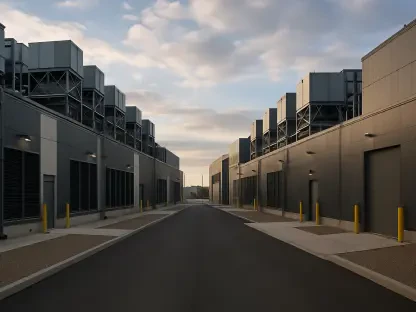Amidst increasing environmental concerns and urban congestion, Australia’s commitment to solar-powered public transportation represents a transformative approach to urban mobility. This shift towards leveraging abundant sunlight for cleaner transportation solutions not only promises significant reductions in carbon emissions but also offers a path towards more sustainable and energy-independent cities. With its bountiful solar resources, the country is uniquely positioned to become a global leader in renewable transit, crafting cleaner, greener urban landscapes.
Australia’s transition to solar-powered public transport has notably gained momentum over recent years, presenting an opportunity to rethink how cities function and breathe. As urban areas globally grapple with air quality and emission challenges, the Australian approach could serve as a blueprint for others to emulate. This exploratory article delves deep into the strategies, benefits, and challenges of integrating solar technologies into public transport systems, shedding light on the potential for this renewable energy source to redefine urban environments.
Redefining Urban Mobility: Harnessing Solar for Public Transport
Solar-Powered Transportation: A New Dawn for Cities
The concept of solar-powered transportation has increasingly resonated with urban planners and environmentalists as cities look to mitigate their environmental footprints. In Australia, cities such as Adelaide and Brisbane have already embarked on this journey, setting ambitious targets in their transit policies. By transitioning bus fleets from diesel to solar-powered systems, these urban centers are reducing their reliance on fossil fuels, thereby cutting carbon emissions dramatically. This shift is not just about mitigating emissions but is also a strategic move towards enhancing air quality, which is crucial for public health and sustainability.
Beyond the direct environmental benefits, solar-powered transportation offers a unique opportunity to alleviate urban congestion. Electric buses, unlike diesel counterparts, operate quietly, leading to a reduction in overall noise pollution. This acoustical improvement contributes significantly to the quality of life in bustling urban areas, promoting calmer, more commute-friendly environments. Furthermore, the quiet operation of these systems encourages broader acceptance and support from local communities, which plays a vital role in the success of sustainable transport initiatives.
Environmental and Economic Impacts of Transitioning to Solar Buses
The transition to solar-powered buses represents a significant potential for lowering transport-related carbon footprints. Conventional diesel buses are notorious for contributing to urban CO₂ emissions and localized air pollution, aggravating respiratory issues among city dwellers. In contrast, solar electric buses offer a mode of transport that entirely eliminates tailpipe emissions, helping cities meet their sustainability goals and fostering alignment with global climate commitments. This transition signifies a crucial step towards more environmentally responsible public transit systems.
From an economic standpoint, solar-powered public transport provides substantial energy cost savings. The decreased dependency on expensive fossil fuels presents cities with a chance to lower overall operational costs. Once solar infrastructures are established, these systems can generate electricity consistently over several decades without significant further expenditure. This long-term economic advantage is pivotal for municipalities seeking sustainable solutions that do not compromise financial feasibility. Moreover, funds saved on energy costs could be redirected towards further enhancing public transport infrastructure, rendering cities even more transit-friendly and energy-efficient.
Technological Innovations Paving the Way for Solar Transit
Advanced Technologies Enhancing Reliability and Efficiency
Technological advancement lies at the heart of Australia’s burgeoning solar transit initiatives. Innovations in fields like lithium-ion battery development, smart energy management systems, vehicle-to-grid (V2G) technology, and high-efficiency solar panels are proving critical. These breakthroughs enhance the reliability and cost-effectiveness of solar energy in public transportation, making it a more viable option for urban centers. Additionally, these technologies extend the range of electric buses, facilitate total energy optimization, and allow buses to return surplus power to the grid, further underscoring solar power’s relevance.
V2G technology, in particular, exemplifies the transformative potential of solar power in transit settings. By allowing buses to channel excess energy back into the grid, this technology creates a harmonious balance between energy consumption and production. This synchronized energy exchange results in more stable grid operations and enhances overall system efficiency. Additionally, smart energy management systems ensure that energy is deployed optimally throughout the transit operations, ensuring reliability even during peak hours. These technological strides are steadily breaking down previous cost and efficiency barriers, accelerating the adoption of solar solutions across Australia.
Overcoming Challenges: Infrastructure and Policy Support
Despite their promise, solar-powered transit systems face practical challenges, notably the high initial costs of solar infrastructure and electric buses. Compatibility with existing electricity grids and efficient battery lifecycle management pose additional hurdles. Nevertheless, these challenges are increasingly being mitigated by technological advancements and decreasing costs of solar technology. Investment in research and development continues to drive significant cost reductions, making solar energy an economically viable option for urban public transport systems.
Policy support also plays an essential role in overcoming these obstacles. Government incentives and legislative frameworks that favor renewable energy investments are instrumental in fostering solar integration within public transport systems. Regional governments have prioritized investments in solar depots, energy storage solutions, and electric buses. This investment reflects a national commitment to cleaner transport solutions, further emphasized by local initiatives such as those championed by Melbourne and Sydney. Supportive policies are crucial in maintaining the momentum of this transition, providing the needed infrastructure and financial backing to make solar-powered transit a staple in the Australian urban landscape.
The Road Ahead: Australia’s Solar Transit Initiatives
Leading by Example: Case Studies in Solar Transit
Adelaide’s Tindo Bus stands as a testament to the potential and practicality of solar transportation. Known as the world’s first 100% solar-powered electric bus, Tindo has been a fixture in Adelaide since 2007, relying solely on solar panels installed at the Adelaide Central Bus Station for charging. This initiative illustrates not only technical feasibility but also the operational viability of solar-powered public transport. Essentially operating as a mobile icon of renewable transit, Tindo exemplifies the benefits and successes achievable through committed adherence to solar initiatives.
Brisbane has also joined the charge towards solar transit, trialing a fleet of electric buses powered by rooftop solar systems. This initiative underlines scalability and adaptability in Australia’s approach to solar transport. By strategically installing solar panels both on vehicle depots and within city infrastructure, Brisbane’s project highlights the potential scope for expansion across the nation. These examples underscore that solar transit is not merely a futuristic vision but a present reality, capable of transforming urban transit landscapes while reinforcing commitments to environmental sustainability and energy independence.
The Role of Public Engagement and Community Support
Community involvement and public support are critical to the success of solar-powered public transport initiatives. Public awareness campaigns highlighting environmental and health benefits serve to build trust and enthusiasm for these new systems. Using success stories such as Adelaide’s Tindo Bus promotes further understanding and appreciation among commuters. Offering rider incentives, such as fare reductions on zero-emission routes, can continue to foster public interest and broaden acceptance of renewable transit solutions.
Engaging the community in conversations about solar-powered transportation also encourages civic empowerment and promotes environmental stewardship. Public engagement initiatives, whether they involve workshops, town hall discussions, or educational events, equip citizens with knowledge and involvement, reinforcing the importance and impact of sustainable transport policies. By actively including communities in the dialogue, cities not only ensure successful solar transition projects but also bolster collective investment in a cleaner, greener future.
Towards A Solar-Powered Future in Australia
In response to growing environmental concerns and urban congestion, Australia’s commitment to solar-powered public transportation marks a significant shift in urban mobility. By utilizing abundant sunlight, this approach not only aims to dramatically cut carbon emissions but also paves the way for sustainable, energy-independent cities. Positioned with plentiful solar resources, Australia has the potential to emerge as a global leader in renewable transit, fostering cleaner, greener urban spaces.
Over the years, the transition to solar-powered public transport in Australia has gained significant traction, offering a chance to rethink urban functionality and livability. With cities worldwide tackling air pollution and emission issues, Australia’s strategy may serve as a model for other nations. This article explores the strategies, benefits, and hurdles of incorporating solar technology into public transportation. It highlights the potential of this renewable source to transform urban ecosystems and set a global precedent in clean energy-driven urban environments.









